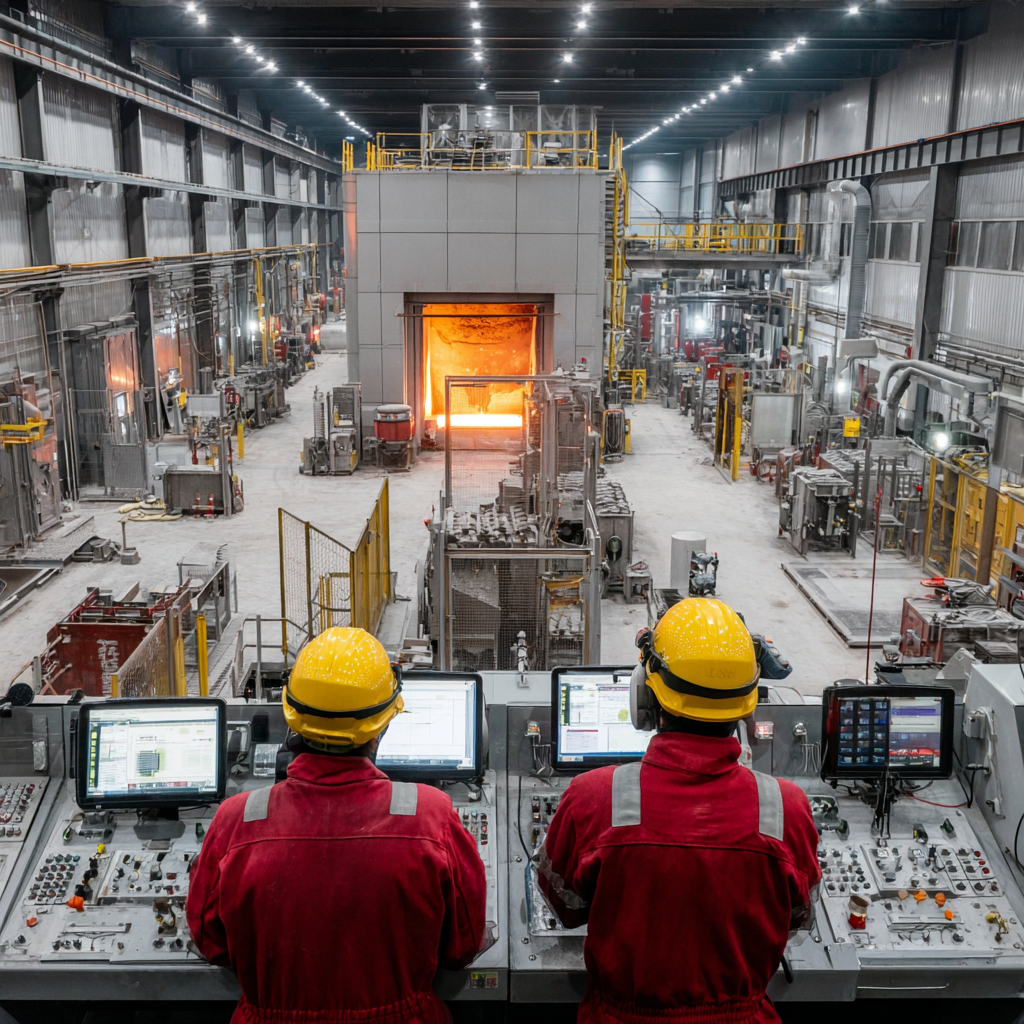

At Steltech Makina, we know that bringing a steel furnace to life isn’t just about switching it on — it’s a precisely choreographed process of heat, timing, and control. The ramp-up phase transforms a newly built or rebuilt furnace into a fully functional powerhouse, ensuring safety, efficiency, and long-term performance.
The Art of Controlled Heating
A steel furnace cannot go from cold to molten temperatures instantly. The ramp-up begins with controlled heating, where temperatures rise gradually to prevent stress and cracking in the refractory lining.
Steltech engineers follow a step-by-step thermal schedule using:
-
Low-rate gas burners to distribute heat evenly.
-
Real-time thermocouple feedback to track internal temperature gradients.
-
PLC-based automation to ensure consistency across every heat zone.
This stage sets the foundation for a long campaign life by preventing premature damage to carbon blocks and ceramic linings.
Synchronization of Systems
As temperatures climb, auxiliary systems — cooling water, hydraulics, and gas cleaning — come online. Steltech’s advanced commissioning protocols synchronize each subsystem, verifying flow rates, pressure levels, and automation responses.
The goal: ensure the furnace breathes and reacts like a living system.
Our engineers perform multiple dry runs before introducing charge materials, guaranteeing that airflows, pressure relief, and thermal expansion all align perfectly before full-scale operation.
Achieving Full Power
Once the furnace reaches operating temperature, molten iron begins to flow. At this point, every sensor, cooling stave, and hydraulic control must perform flawlessly.
Steltech’s integrated monitoring systems capture data from hundreds of points — transforming heat into insight and energy into efficiency.
Through careful ramp-up management, plants experience:
-
Stable temperature control
-
Optimized fuel use
-
Reduced emissions
-
Extended refractory lifespan
Each ramp-up is a test of engineering discipline, and when done right, it sets the tone for years of reliable production.

